Chicken Paillard is my latest weeknight obsession, and it’s a winner! Tenderized chicken is pan fried in butter, and the leftover pan drippings are turned into a silky white wine sauce with lemon, garlic, and thyme. All in 30 minutes or less!
If you’re into saucy one-pan recipes like chicken marsala and smothered chicken, this easy chicken dish has your name all over it.
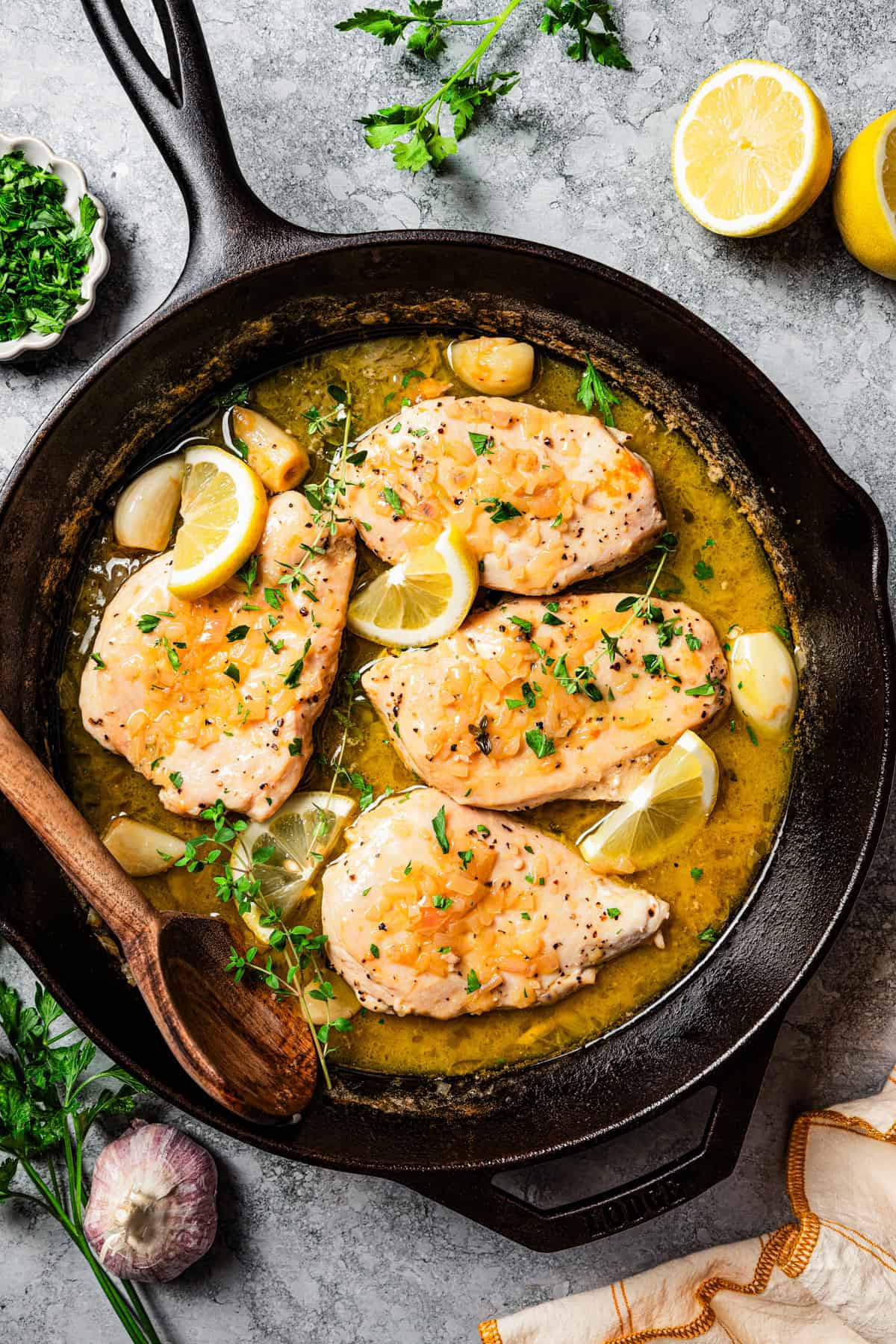
I’ve been loving this buttery chicken paillard lately (officially pronounced “pa-yar”, as the “d” is silent en français!). It’s a classic French cooking technique for tenderized chicken (or veal) that’s quickly pan-seared. I turn the leftover caramelized bits into a mouthwatering, garlicky pan sauce with white wine, lemon, and plenty of butter. The whole thing takes approximately 25 minutes on the stove, perfect for your next weeknight dinner!
I still remember my first French cooking class, feeling like I was channeling Julia Child herself. With every sizzle and swirl of the pan, I imagined myself mastering the art of French cuisine. This chicken paillard recipe definitely brings back those fun memories and makes me feel like a culinary star every time I make it!
Why You’ll Love This Chicken Recipe
- Flavor-packed. This time, I’ve dressed this chicken paillard with a garlicky, zesty white wine butter sauce with lemon and thyme. The flavors build up in the pan, and the saucy chicken tastes amazing over rice or pasta.
- Quick. Since chicken paillard involves pounding chicken flat, the cooking time is super quick (under 10 minutes) and the chicken comes out especially tender.
- One-pan. The chicken and the rich butter sauce are cooked in one skillet. Not only does it lock down the flavor, but clean-up couldn’t be easier.
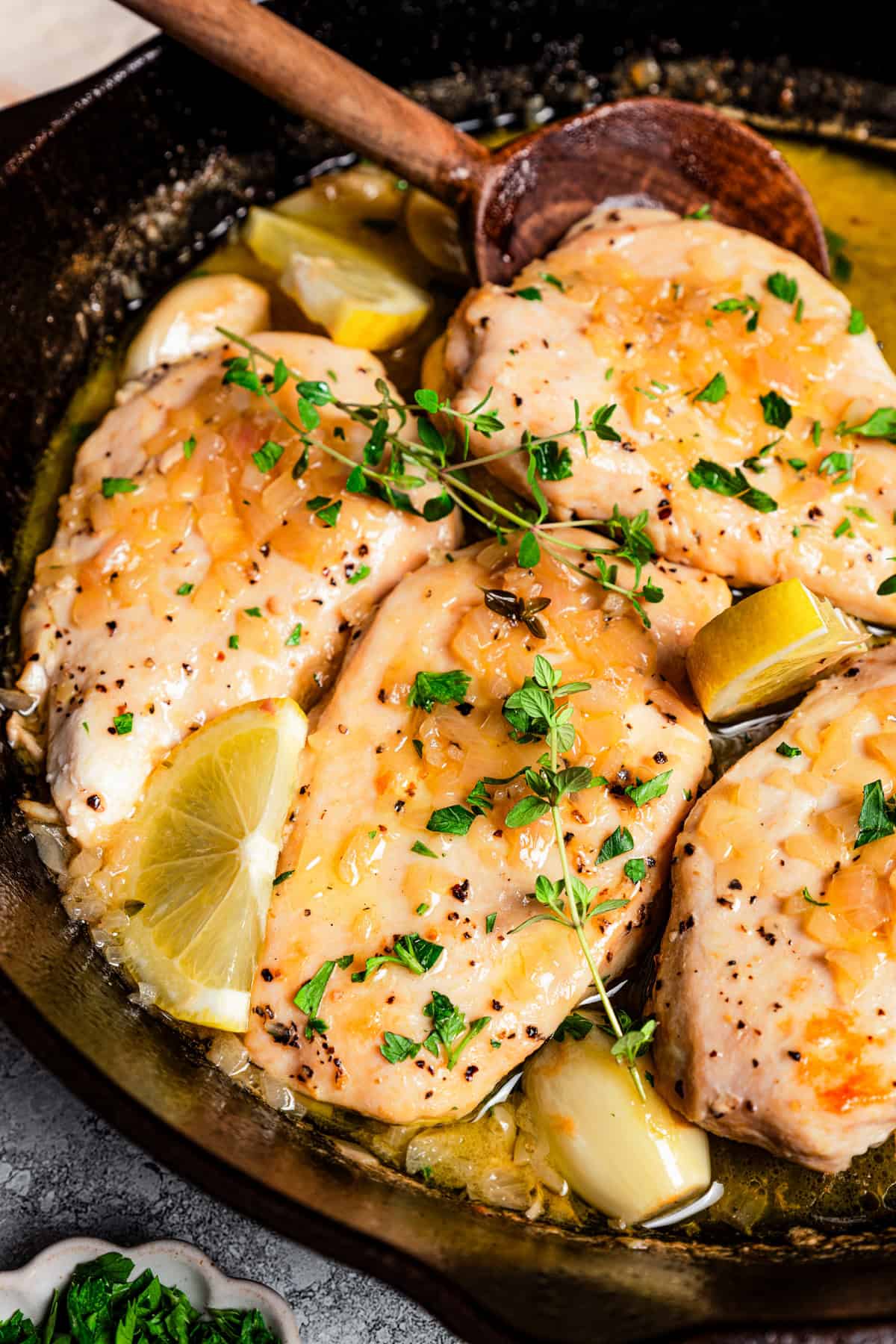
What Does Paillard Mean?
Paillard is just a fancy French term for a piece of boneless meat (in this recipe, chicken) that’s pounded thin before it’s cooked. The technique is similar to how Italians tenderize meat for scallopini or piccata. Pounding the chicken thin also lets it cook faster and more evenly.
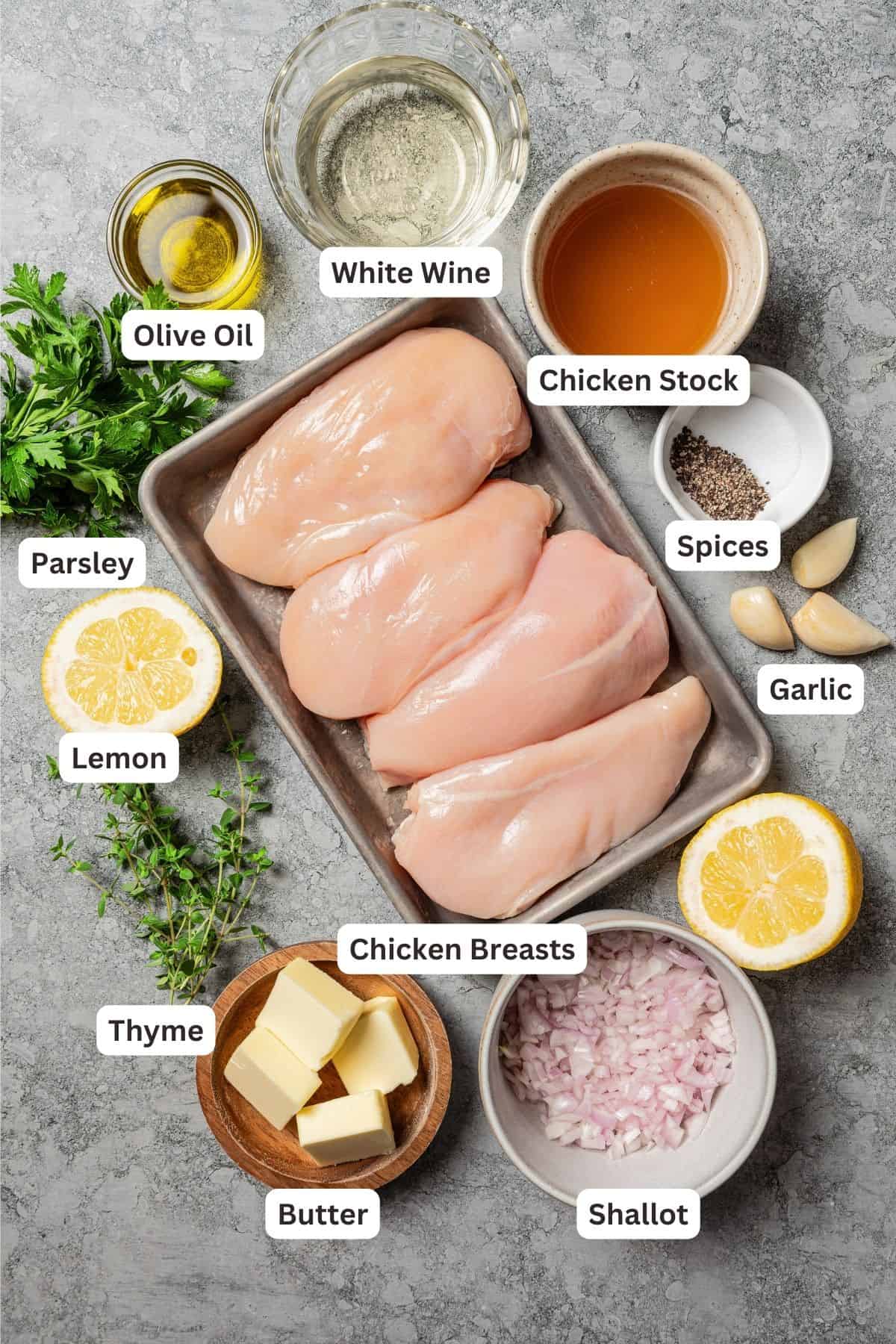
Ingredients You’ll Need
For this version of chicken paillard, I used simple ingredients that I knew would bring the maximum amount of flavor in a short cooking time. Find some quick notes down below. Scroll down to the printable recipe card after the post for a full ingredients list with amounts.
- Chicken – I use boneless skinless chicken breasts. Technically you could use thighs. While it won’t need as much flattening, the cooking time may also be a bit longer for thigh meat.
- Butter – You’ll need butter for basting the chicken while it cooks, and for the pan sauce afterward. The butter can be salted or unsalted.
- Garlic and Thyme – Fresh whole garlic cloves and thyme sprigs from the garden pack lots of flavor into the butter you’ll use for basting, and later the pan sauce.
- Shallot – Finely minced.
- White Wine – This can be any dry white, like Chardonnay or Pinot Grigio. Choose an affordable wine that you’d still like to drink, as the flavors carry over into the sauce.
- Lemon – Freshly squeezed, please!
- Chicken Stock – Or low-sodium chicken broth. Vegetable stock will work in a pinch.
- Parsley – Chopped, for garnish.
How to Make Chicken Paillard
I don’t know about you, but any chicken dinner that takes 25 minutes with only one pan to wash afterward is my cup of tea. This quick-cooking chicken paillard delivers!
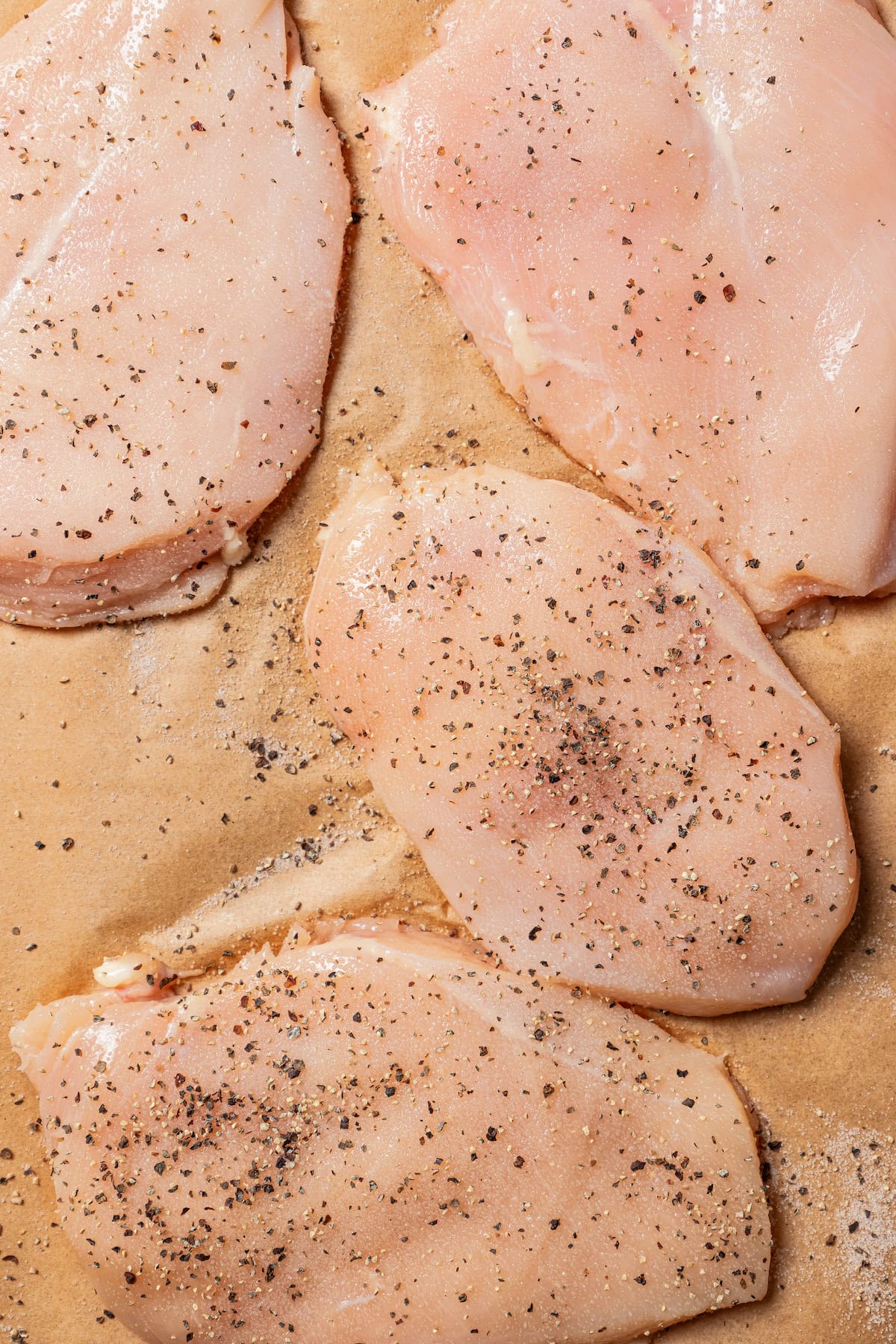
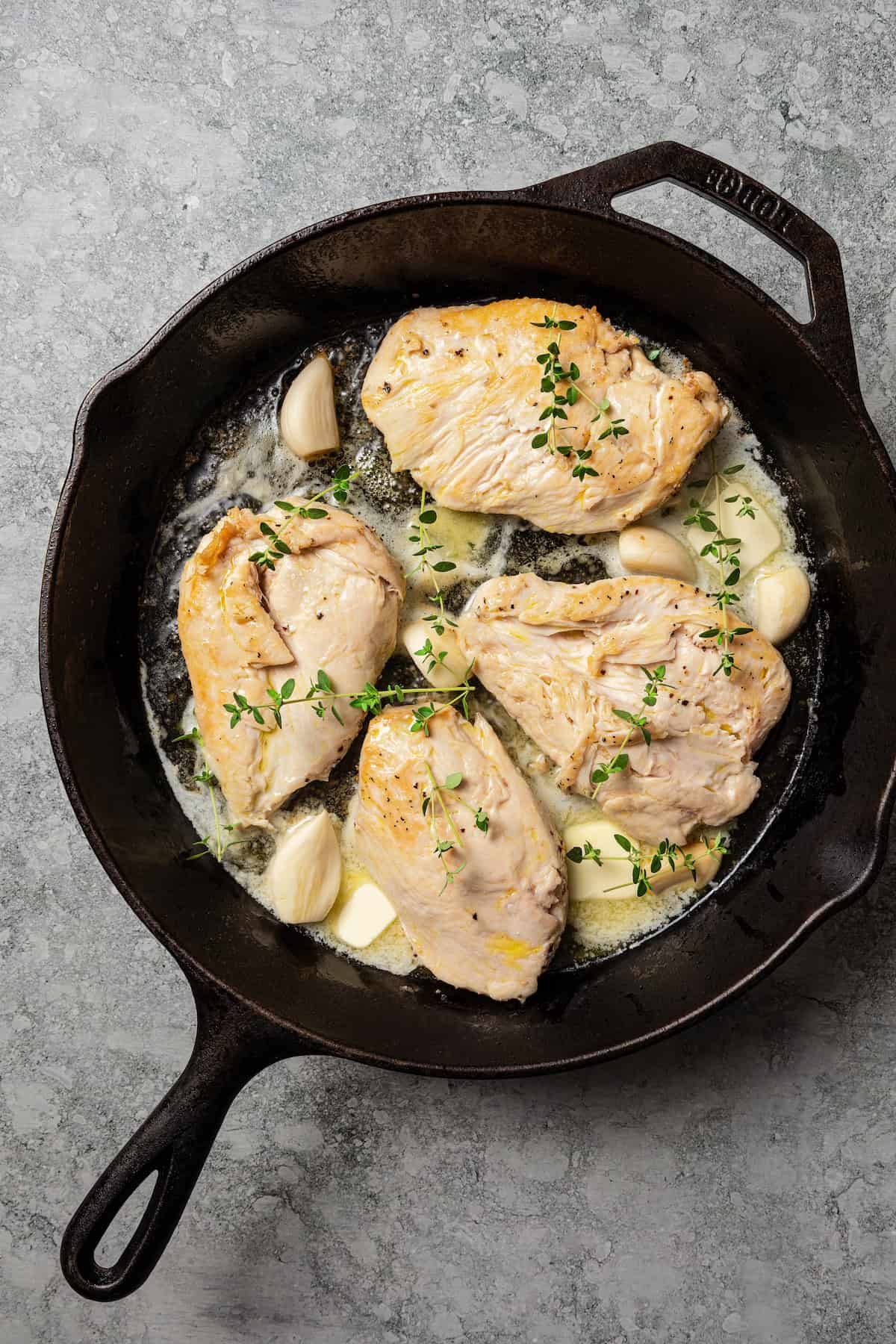
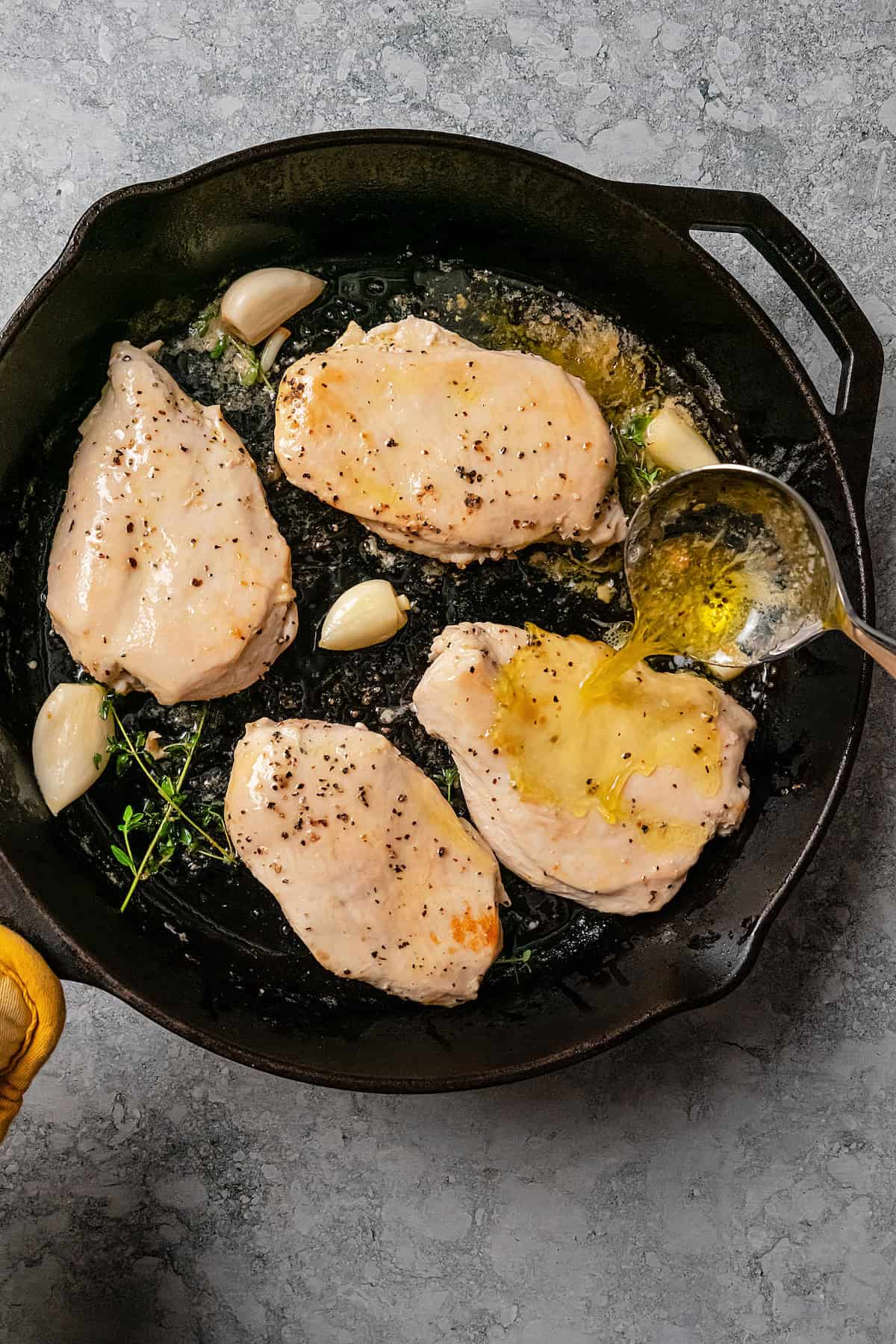
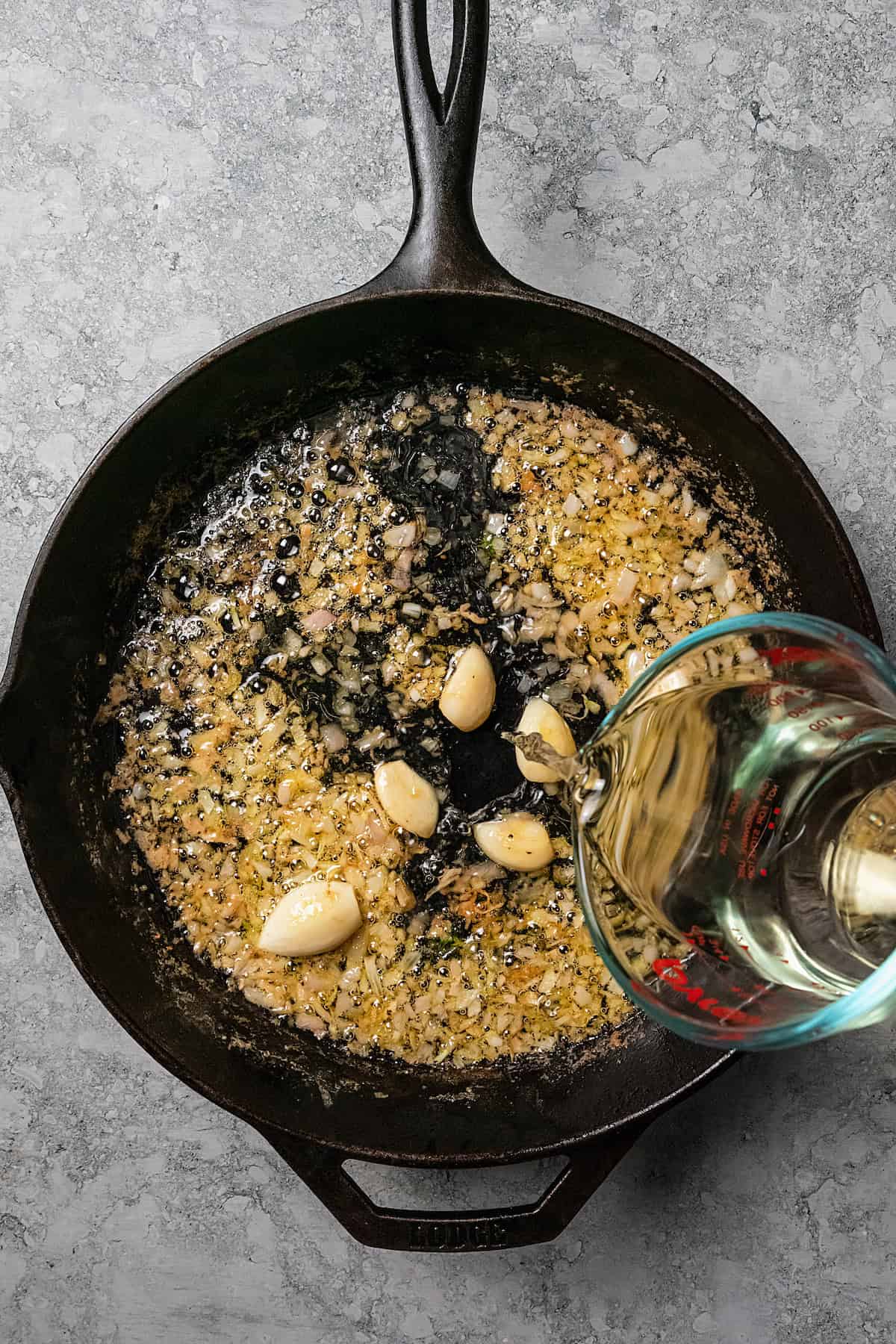
- Prepare the chicken. You’ll start by pounding the chicken breasts to an even, ⅓” thickness. Season both sides with salt and pepper.
- Fry the chicken. Next, get the chicken searing in olive oil over medium-high heat. After 3 minutes or so, add your butter, garlic, and thyme. Baste with the melted butter while the chicken finishes cooking.
- Make the sauce. Move the chicken to a plate. In the pan, sauté shallots with (more) butter until they’re nice and soft. Then, pour in the wine and let that cook off. Add lemon juice and stock, and simmer until the pan sauce is reduced by about half.
- Put it all together. Lastly, add the chicken back into the sauce (or pour the sauce over the chicken), and serve with parsley and lemon wedges. Bon appétit!
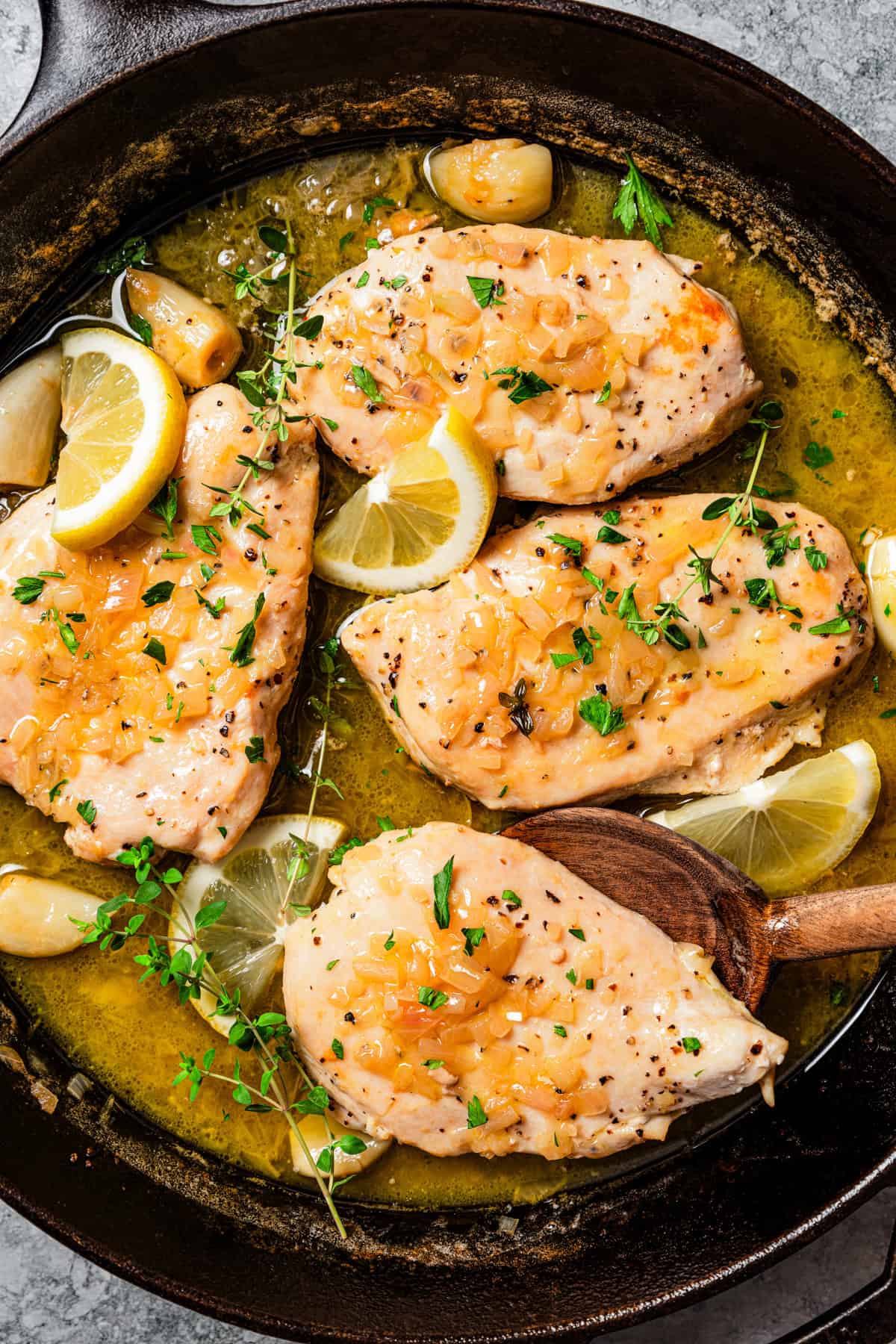
Tips and Variations
- Check that the chicken is done. Chicken paillard cooks quickly, but if you’re not quite sure if it’s done, the easiest way to check is to use an instant-read thermometer. Chicken is cooked when the internal temperature hits 165ºF.
- Use a non-metal spoon to baste. I use a cast iron skillet, but if you’re using a non-stick skillet or similar, avoid basting with a metal spoon (or be extra gentle) as it can scratch the non-stick coating.
- Different sauce. Paillard is the method, but you can swap out the wine butter sauce in this recipe for just about any pan sauce you’d like. Try the creamy garlic and lemon sauce from my chicken francaise recipe, or make chicken in tomato sauce.
- Add-ins. Sauté mushrooms alongside the shallots, or try other add-ins like spinach, cooked crumbled bacon, chorizo, capers, sun-dried tomatoes, and olives.
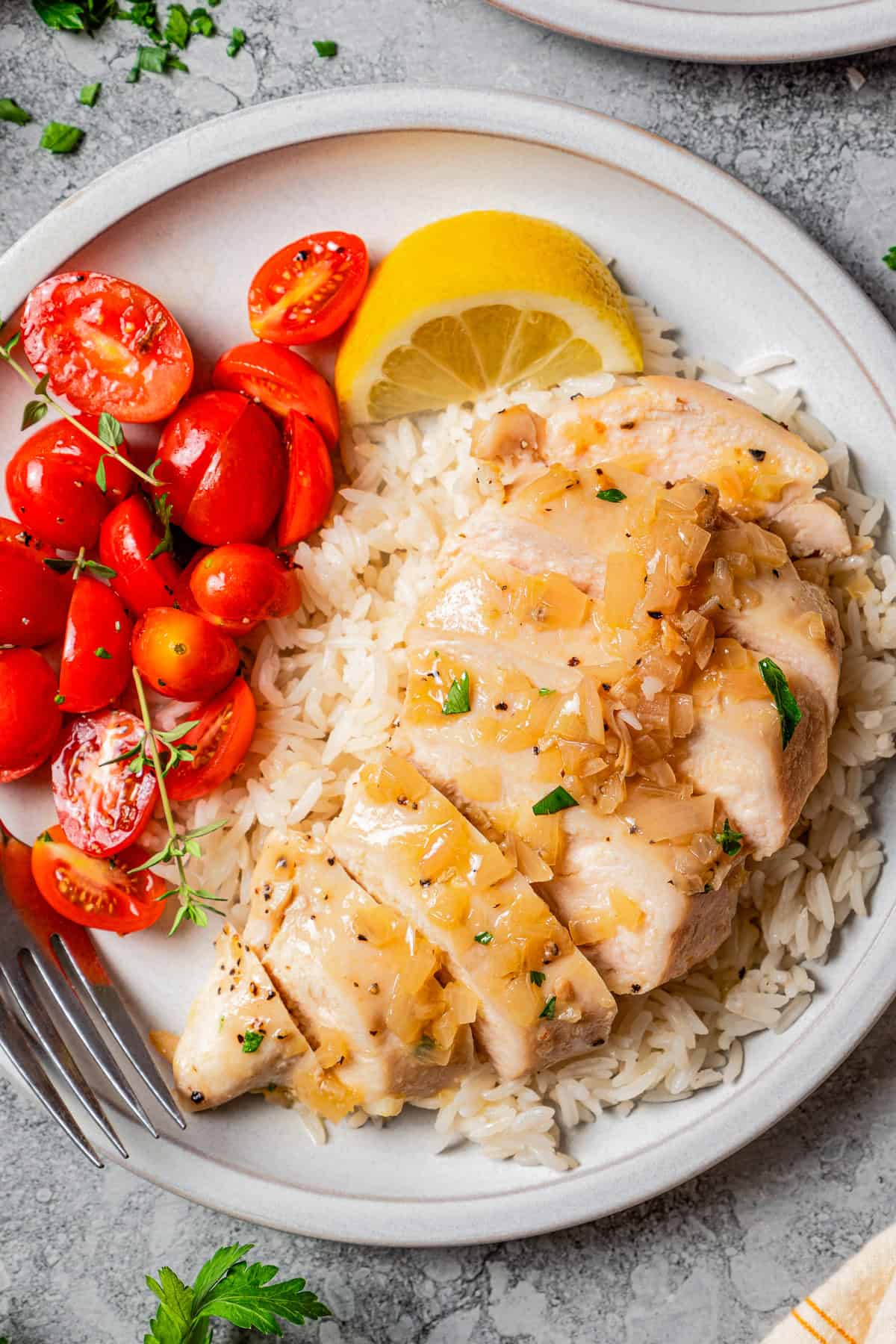
Serving Suggestions
While the wine sauce simmers away in the pan, I’ll usually throw a batch of jasmine rice into the Instant Pot or boil some pasta to round out our chicken paillard meal. Nestle the chicken over top with spoonfuls of sauce and a sprinkle of parsley. Voila! Just add a side of heirloom tomato salad or sautéed broccolini. I’ll also never pass up a basket of sweet dinner rolls for sopping up the leftover sauce.
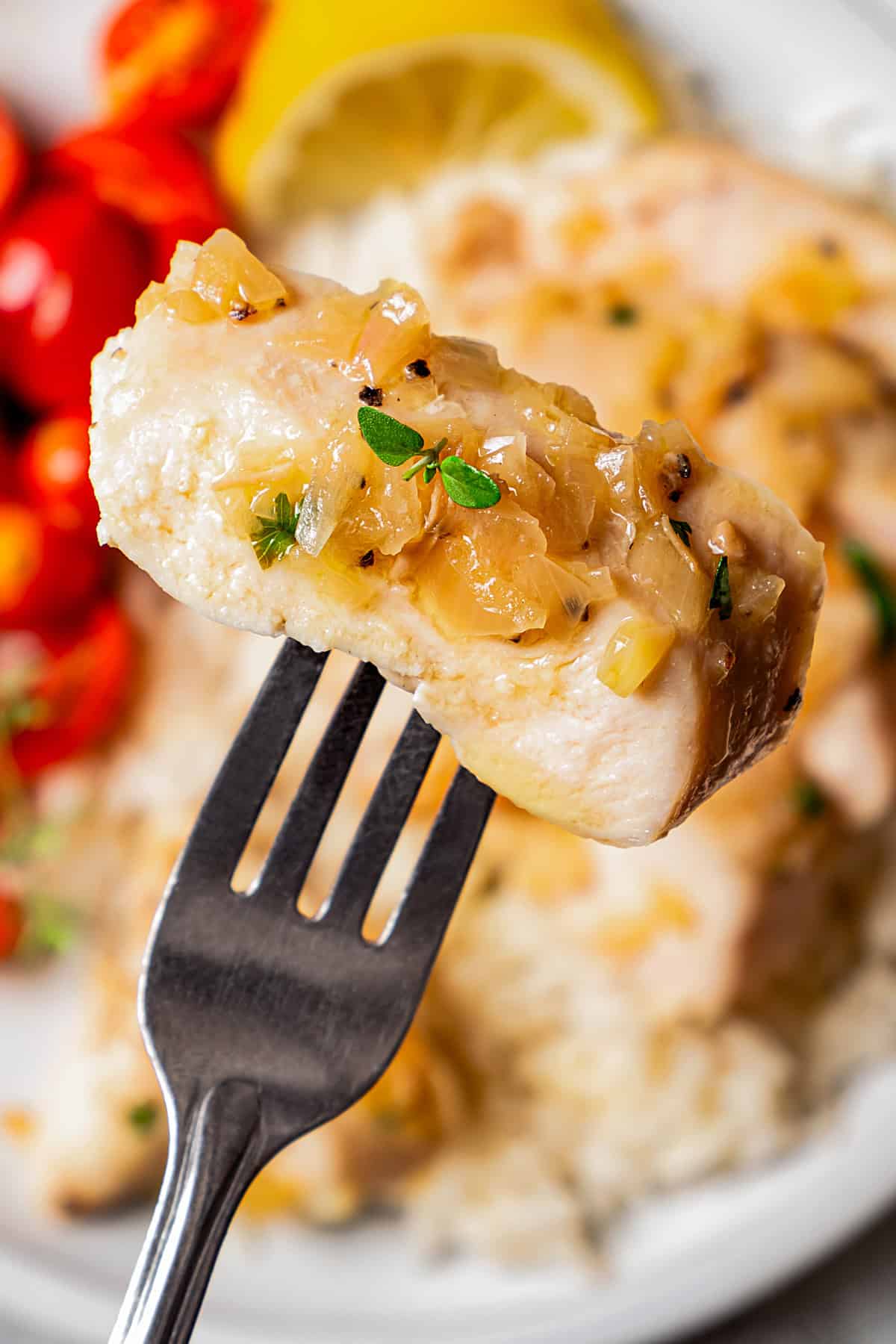
Storing and Reheating Leftovers
- Refrigerate. Store any leftovers in an airtight container in the refrigerator, and enjoy within 3 days. Leftovers also taste delicious, chopped up, and served cold over a chicken salad.
- Reheat. I like to reheat the chicken in a skillet on the stovetop along with any leftover sauce. Add a sprinkle of water, wine, or broth to moisten the chicken while it warms in the pan.
More Chicken Recipes
Pin this now to find it later
-
Pound the chicken. Place the chicken between 2 pieces of plastic wrap on a work surface. Use a rolling pin or something similar to pound each piece to an even thickness of about 1/3 inch.
-
Season the chicken. Season the chicken evenly on both sides with salt and pepper.
-
Pan fry. Heat the oil over medium-high heat in a large, heavy-bottomed skillet. Add the chicken and cook for 3 minutes. Flip the chicken.
-
Baste. Turn the heat to medium and add the butter, garlic, and thyme to the pan with the chicken. Once the butter has melted, spoon it over the chicken repeatedly until the chicken is cooked through, about 3 minutes. Transfer the chicken to a plate and remove the thyme from the pan.
-
Saute. Add 2 tablespoons of butter to the pan. Once the butter has melted, add the shallot and saute until translucent.
-
Deglaze. Add the white wine and cook for 1 minute, occasionally stirring with a wooden spoon. Be sure to knock any brown bits from the pan into the sauce.
-
Simmer. Add the lemon juice and chicken stock and simmer for 5 minutes or until the sauce has reduced by half.
-
Put it all together. Pour the sauce over the chicken breasts and garnish with fresh parsley.
Calories: 577kcal | Carbohydrates: 8g | Protein: 33g | Fat: 41g | Saturated Fat: 17g | Polyunsaturated Fat: 3g | Monounsaturated Fat: 18g | Trans Fat: 1g | Cholesterol: 153mg | Sodium: 2762mg | Potassium: 723mg | Fiber: 1g | Sugar: 3g | Vitamin A: 845IU | Vitamin C: 7mg | Calcium: 48mg | Iron: 2mg
Nutritional info is an estimate and provided as courtesy. Values may vary according to the ingredients and tools used. Please use your preferred nutritional calculator for more detailed info.


